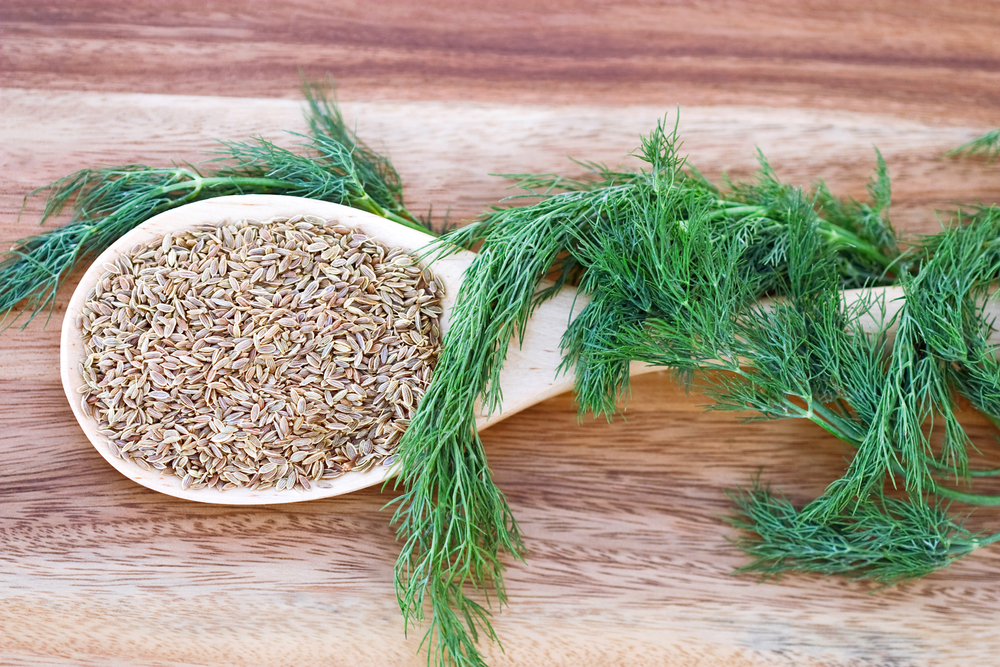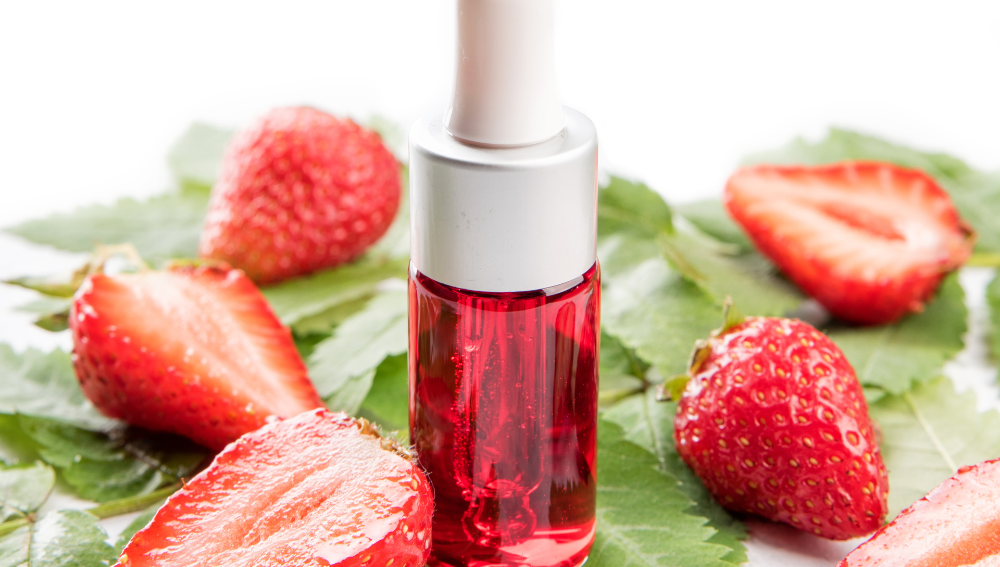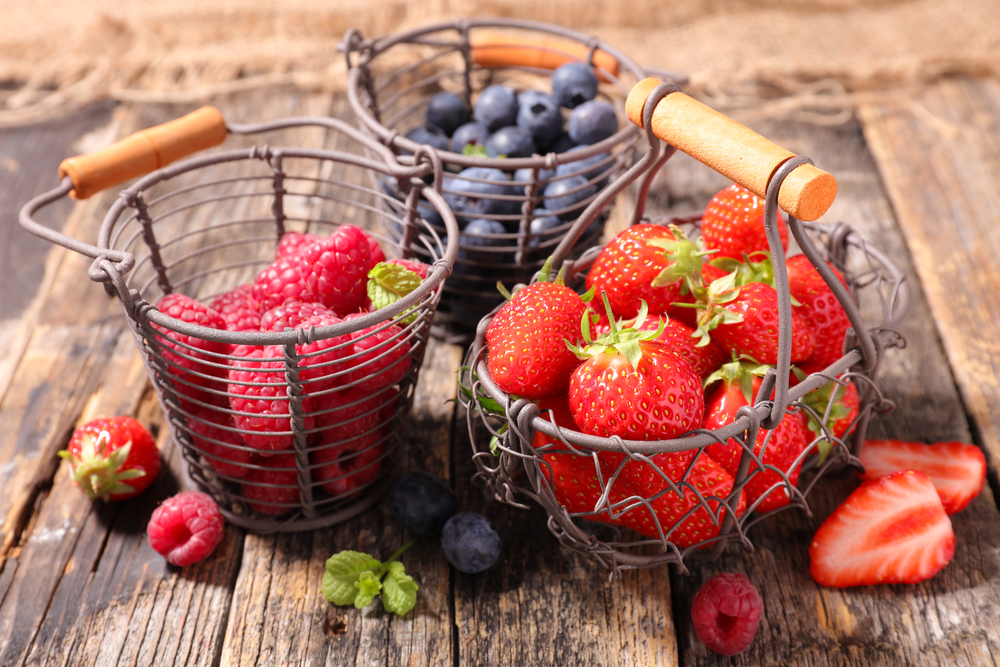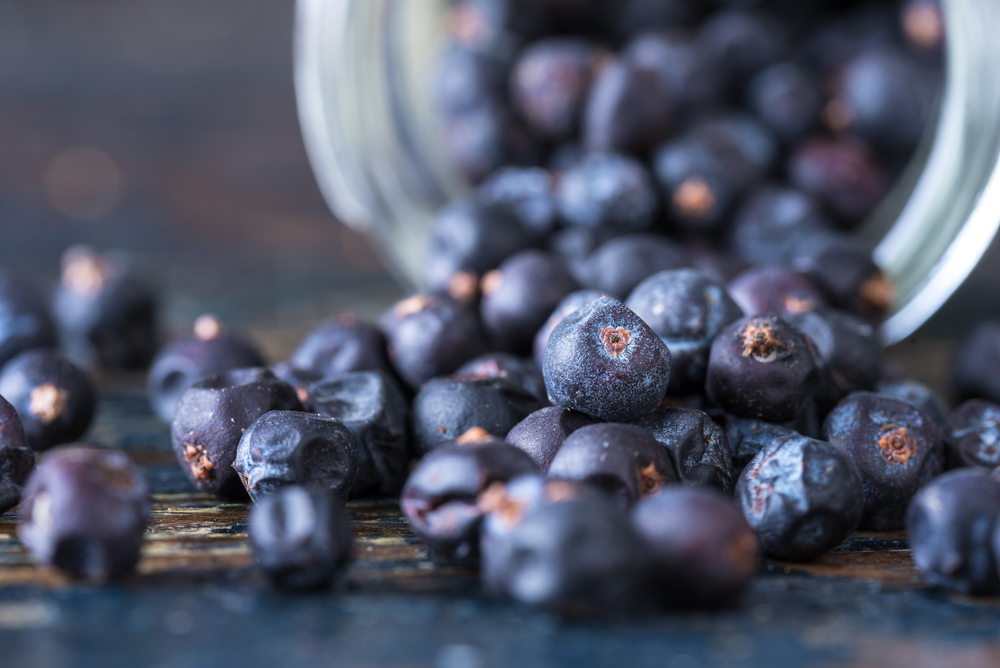Invasive weed or succulent snack: what is a wild strawberry, and how is it different from the plump red berries we find at the grocery store? Is a wild strawberry safe to eat?
Yes, you can eat wild strawberries. They are a non-poisonous species of their own, and they’re completely safe to eat.
Not only safe, but they have a unique, sweet flavor and offer a lot of potential in the kitchen. Keep reading to make sure you can safely identify your foraged wild strawberries before eating them!
What’s the Difference Between Strawberries and Wild Strawberries?
Wild strawberries are not to be confused with the large, plump strawberries found at the grocery store.

Wild strawberries grow in forests or yards and are smaller, with plants about 3 inches tall. They grow as a ground-covering plant rather than on a bush, like regular strawberries. The berries themselves are also smaller, closer to the size of a raspberry.
The popular garden strawberries are usually grown and produced by farmers for commercial sale. Wild strawberries are the ones you’re more likely to stumble across on a hike, and make for a great foraged snack.
Because they occur naturally in the wild, wild strawberries are especially good to eat. They don’t contain any of the chemicals added to regular strawberry plants, unless there’s a trace through cross-pollination.
Grocery-store strawberries, or garden strawberries, were actually invented by crossing wild strawberries with a variety of Chilean strawberries. So, the wild ones came first, and the commercial strawberries didn’t show up in the United States until the mid-1800s.

Because wild strawberries are safe to eat, these little fruits may have just become a lot more appealing. But even though you won’t find yourself in the ER after ingesting one, are they tasty enough to be worth the foraging?
Are Wild Strawberries Good to Eat?
Wild strawberries (Fragaria virginiana), or Virginia strawberries, are an exciting find in the world of foraged foods. Not only are wild strawberries safe to eat, but they’re also delicious – arguably more so than regular strawberries – and very good for you.
If you come across them in North America, you don’t have to worry about them being invasive and can happily keep them around.
Their flavor is similar to that of a store-bought strawberry, but wild strawberries are actually sweeter. They lack the sour quality that some garden strawberries have.
All that sweetness gets concentrated in their smaller size! Texturally, they’re slightly different, as the seeds are closer together on the body of the strawberry.
The berries themselves are bite-sized, and you won’t find any massive ones like you might with grocery strawberries. Wild strawberries are softer and juicier than their grocery-counterparts, and usually don’t have a crunch.
Wild strawberries are low-cal, offering only 45-per-cup. They’re extremely high in Vitamin C for such a tiny fruit, offering more than an orange! When raw, they also contain health-boosters like cancer-inhibiting polyphenols and folic acids.
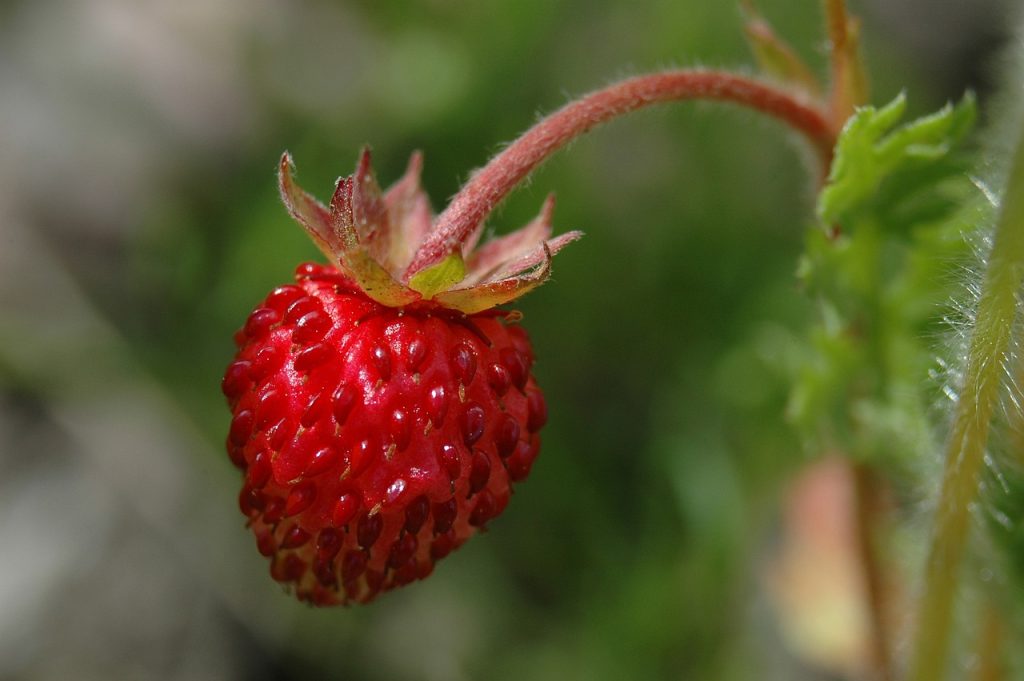
Wild strawberries are good to eat, and serve a few medicinal purposes outside of consumption. Their leaves can be used as treatments for digestive and gastrointestinal problems. The juice of the berries themselves can be used to treat sunburns as well.
Wild strawberries are also good to eat because of their cost benefit. Compare Whole Foods Market’s 1 pound of garden strawberries for $4.99 and Kroger’s non-organic ones for $3.99 with the free cost and fresh taste of wild strawberries.
If you don’t live in California, Florida, or Oregon, the most strawberry-producing states in the US, these berries have likely traveled a long way to get to you, and aren’t nearly as fresh as a wild strawberry you might find outside.
Wild strawberries are so delicious and versatile that you might want to plant them yourself. As perennials, they fruit abundantly in the spring and grow back annually. With your own plants, you wouldn’t need to buy strawberries for the whole season.
Just make sure to provide as much chalky, rich soil, lots of sun, and straw mulch as you can, so that your wild strawberries are good to eat.
What are the Different Types of Wild Strawberries?
Many people confuse wild strawberries for mock strawberries. We’ll get into the differences between the two. Before that, though, some clarification is due about the different berries within the larger category of wild strawberries.
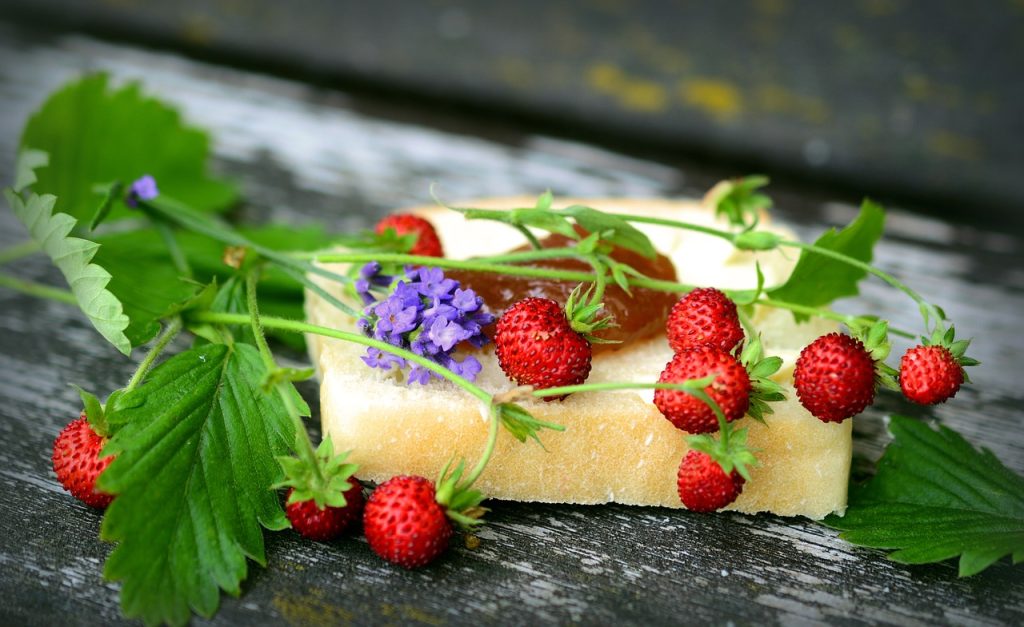
| Virginia Wild Strawberry | Beach/Coast/Sand Strawberries | Woodland Strawberry |
| Medium-light green leaves, shaped like a 3-leaf clover | Dark, shiny leaves, plentiful on the vine and shaped like 3-leaf clover | Large medium-green leaves |
| Small, red, flavorful berry | Small, red berry, but not as flavorful | Slightly larger berries that grow in shady areas |
| White flower | White flower | White flower |
All of these wild strawberries are edible, so you don’t run the risk of poisoning yourself by consuming them. They’re also all more flavorful than the mock strawberry, which we’ll discuss now.
How to Identify a Wild Strawberry from a Mock Strawberry?
It’s very easy to confuse wild strawberries and mock strawberries, because they look and grow similarly. Luckily, neither is poisonous. The most important difference is that mock strawberries aren’t nearly as tasty as wild strawberries.
Mock strawberries’ taxonomic name is Duchesnea indica, the latter word indicating that they’re from India. They’re small and red like wild strawberries. However, they’re bitter, dry, and have harder seeds. Their aftertaste is comparable to cucumber and watermelon.
Mock strawberries have yellow flowers, while wild strawberries consistently have white flowers. You can also check the leaves: mock strawberry leaves have blunter tips than wild strawberries. You can also tell by the hardness of mock strawberry seeds.
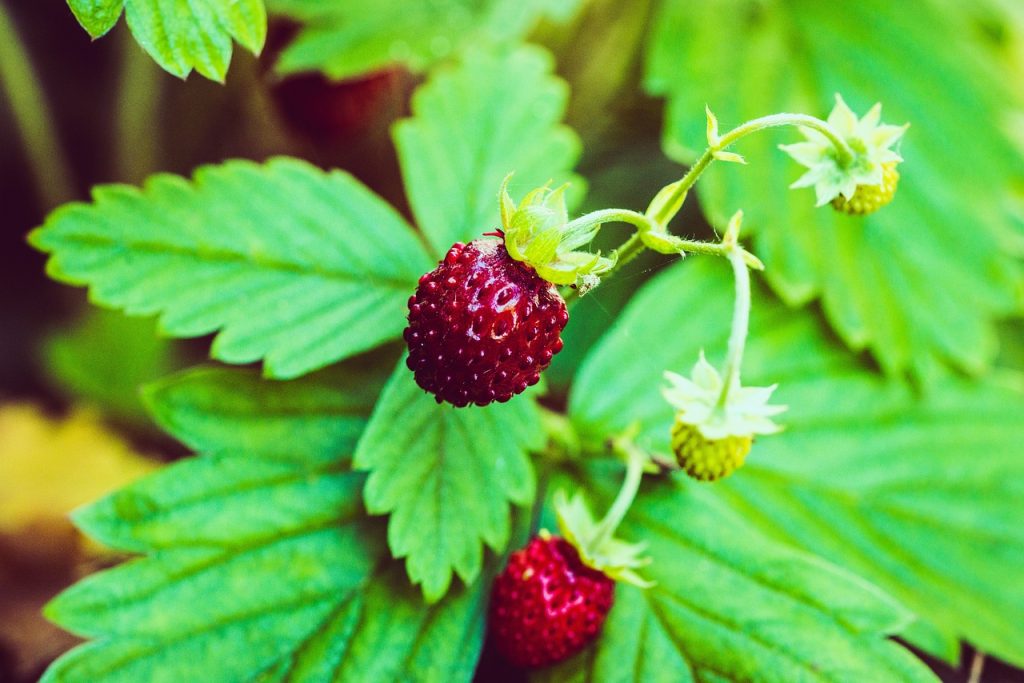
Of course, you could also do a taste or crush test to tell the difference between a mock and wild strawberry. If you crush the berry and little juice comes out, or taste it and get only bitterness, it’s probably a mock strawberry.
Mock strawberries, unlike wild strawberries, are a weed in North America. Wild strawberries are native to North America, while mock strawberries come from southeast Asia. Their original introduction in the United States was as a decorative flower, but they expanded rapidly and became invasive.
How to Safely Eat a Wild Strawberry
Before jumping to fancy recipes, make sure the wild strawberry is safe to eat by identifying them with the methods we used above. Check the flowers, leaves, and texture of the berry. Then, you’re ready to enjoy a delicious foraged food.
The possible ways to eat wild strawberries are as endless as with regular strawberries! Try eating them plain as a snack or with whipped cream on top. You could put them in a parfait or smoothie, top a cake with them, or boil them to create a strawberry sauce or jam.
If you have too many wild strawberries, you could try freezing them with our strawberry syrup recipe. This recipe calls for regular strawberries, but the wild ones work just as well. You can even use a bit less sugar, since the berries themselves are sweeter.
You could also steep the wild strawberry leaves to make tea. The leaves, as well as the berries, are high in Vitamin C whether they’re fresh or dry. Just make sure they’re not wilted, because these may produce mold.
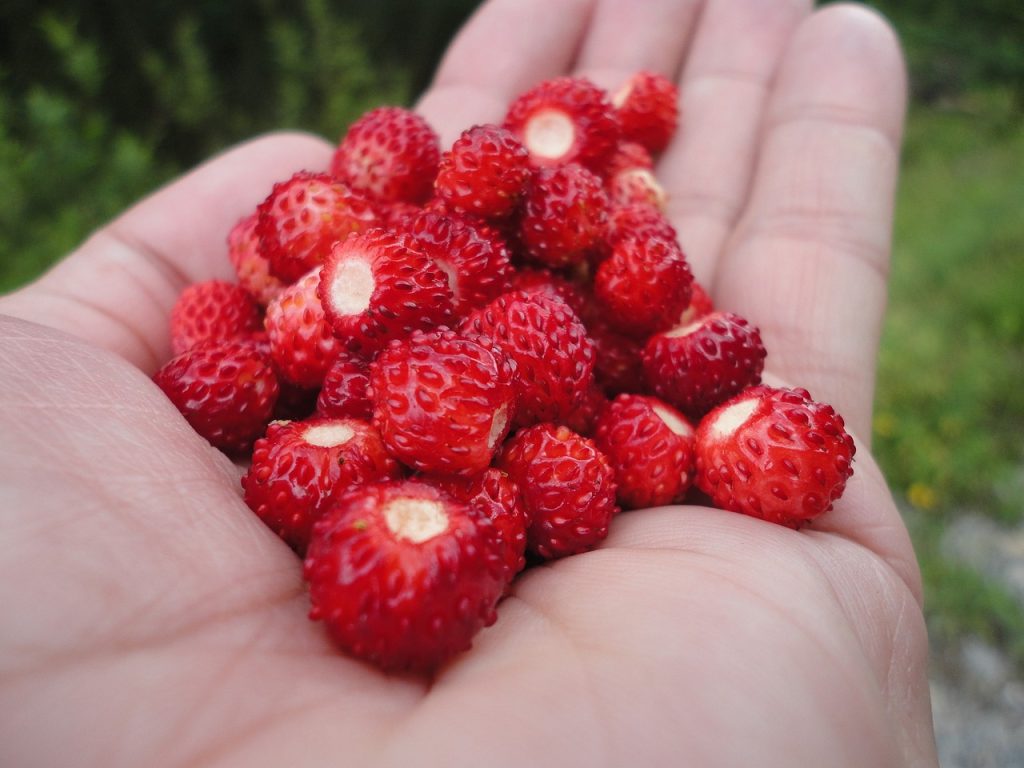
Where can I find wild strawberries?
Wild strawberries grow throughout the United States and Canada, primarily in dry areas with chalky, loamy, and rich soil. They’re most common in Midwestern states, where the summers are fairly temperate and the soil meets their needs.
They grow nearly anywhere that has their preferred soil and a decent amount of sunlight, most often yards and the edges of woods. Check along walking paths or sunny, lush areas. They’re hardy enough to grow in grass or among ferns on the forest floor.
Wherever you come across one wild strawberry, there’s likely more. As a creeping plant, they produce new plants often, connected by a vine that extends along the soil’s surface.
Frequently Asked Questions
Are there poisonous berries that look like wild strawberries?
The main plant that looks like a wild strawberry is the mock strawberry. There are other red berries that grow naturally in the woods, but they have smooth surfaces and look more like a lingonberry. Some examples are holly berries, Jerusalem cherries, and Pokeweed berries: all poisonous.
It’s best to do research and be completely certain of what you’re about to consume before doing so.
Are mock strawberries safe to eat?
Mock strawberries aren’t unsafe to eat, but they don’t contain the good flavors or health benefits of wild strawberries. Mock strawberries, wild strawberries, and regular strawberries all contain the risk of allergic reactions, but that doesn’t make them less safe overall than nearly any other food.

How can you tell if wild berries are poisonous?
To ascertain whether a berry is poisonous, you should take necessary steps to identify them. This includes taking note of the leaves, color and texture of the fruit, and the plant’s roots.
It’s likely most helpful to write these things down and then consult a scientific web source. Better yet, try a book on berry identification for your tri-state area, like this one.
Some things that almost always indicate poison are spines on the berry, a hairy stem, or milky sap oozing from anywhere. You can also rub the berry on your skin, wait five minutes, and check for irritation.
If you ever eat a berry and experience vomiting, hallucination, or diarrhea, you’ve definitely consumed poison and should seek medical help.
In conclusion
These berries have got it all. Wild strawberries are safe and good to eat, not poisonous, and on top of this, tasty and healthy. Their extra-juicy, sweet flavor can serve as an even brighter addition to usual strawberry recipes, or as a satisfying snack. You should have nothing to worry about, and only excitement when it comes to the possibilities of foraging these little treasures. If you’re reading this in the spring, live in the U.S. or Canada, and find yourself hungry, why not go hunt for some right now? It’s worth it.


